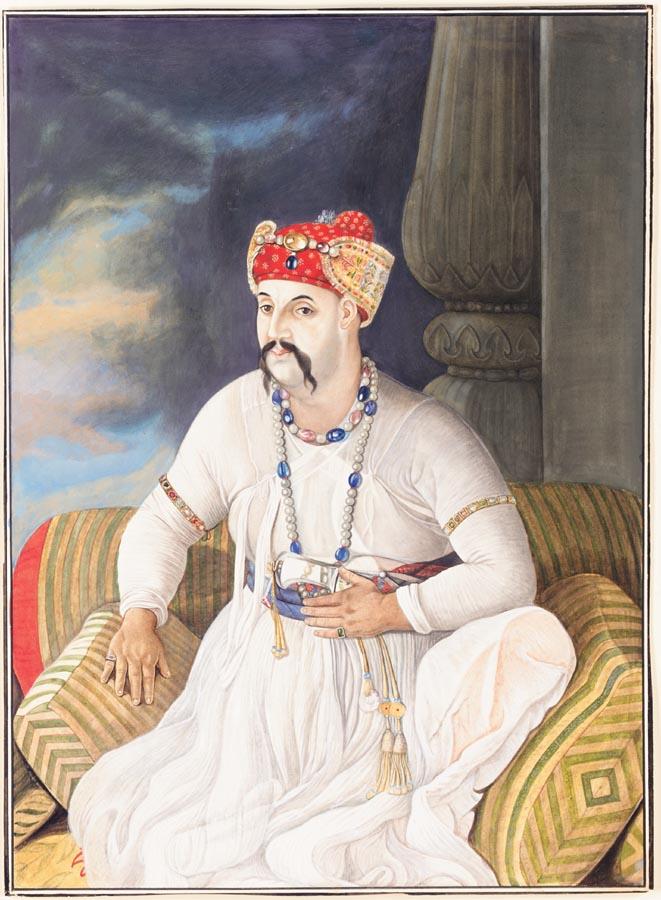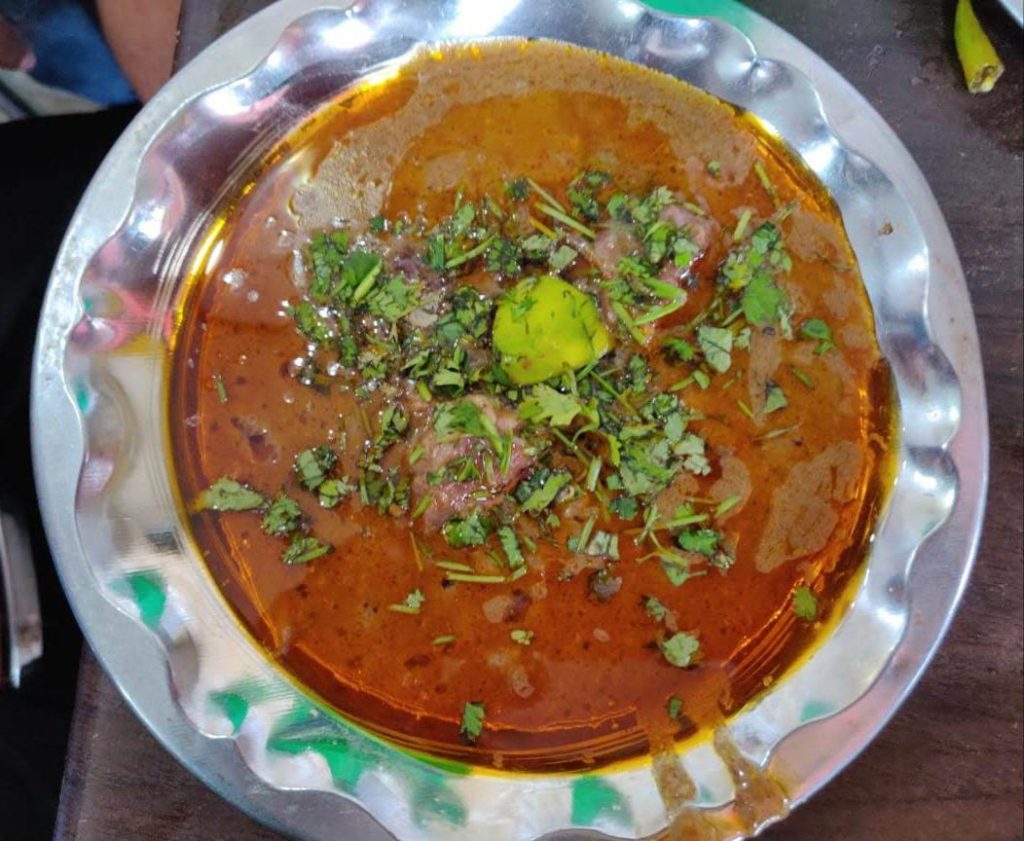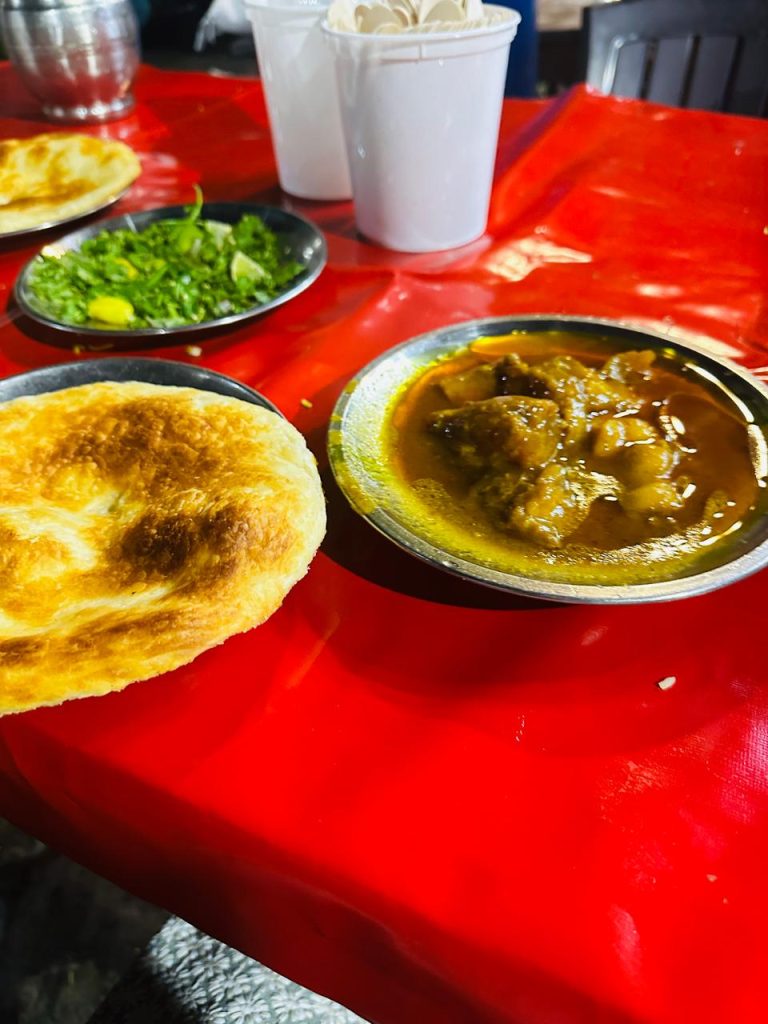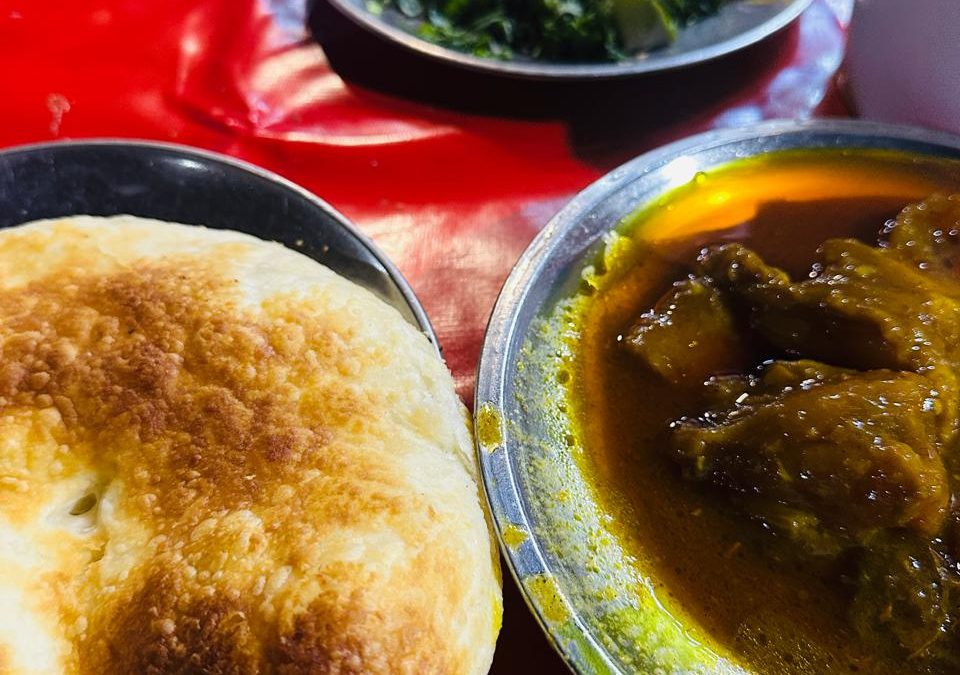Nahaar refers to a gastronomical condition when one is empty stomach, not necessarily at mornings, this could be well at evenings too. But, in popular culture, across the Oudh Mainland, Nahaar refers to a situation when one is empty stomach at the break of dawn, and thus the word nahaar-munh is used to express this condition. The Hakeems (Ancient Greek Medicine Practitioners) of Oudh would prescribe the medicines to be taken empty stomach at the start of the day as nahaar-munh dawa. Historical records tell us that the Nawabs arrived in Fyzabad Oudh in the last decade of 18th century, precisely in 1724 from the city of Neyshabur, the capital of the Razavi province of Iran. Nawab Saadat Ali Khan being the first of line, who laid the foundation of Oudh dynasty, that would later leave this region with food that will become its identity.
The Nawabs had brought with them a plethora of cultural inheritance in terms of language, literature, music and cuisine. It becomes imperative to mention here that Nahaari doesn’t belong to Mughals as there is no mention of nahaari having been cooked or served prior to late 18th century. What is true of this conviction is just that it was cooked for the first time in Oudh, while the sub-continent was ruled by the Mughals. Therefore, it becomes evident that from the reign of Qutubuddin Aibak to Shah Alam – II, none of the Delhiites had cooked or sold nahaari, or were even offered to taste it, except during their sojourns to Oudh after Nawabs set their foot in Fyzabad. Hence, what could be said with verity and certitude about this meat recipe is that neither nahaari has been part of Mughlai cuisine nor it was made to feed the troops of Mughals because by the time nahaari had hit the Oudhi Bawarchikhanas, there weren’t any real battles left to be fought.
As the pages of the Persian dictionary are turned, it emerges that the word (نﮩار) nahār means much, many; diminution; a goat; a black waterfowl with white spots on the head; while the word nāhār refers to fasting or breakfast; the word nahār kardan, is the process of eating. The mystery unveils with the deciphering of Persian word, nihār, that is nowhere near to food or anything edible an idol; but it necessarily means detriment, loss. Another meaning of the word nihār or often nahār is to fear, to dread, having apprehension; consumption of medicine, and self-harm or wasting of the body.
These Persian words contain immense value as one glances upon them, ( نﮩار ) nahār being the day from sunrise to sunset; the diffusion of light, making things visible; also, the name of a poet; a young bustard (quail). While the expression lail-an wa-nahāran, means – by night and by day. Most importantly, in modern Tehrani accent the lunch called as ( نﮩاره ) nahāreh and ( نﮩاری ) nahārī also means lunch while modern Persian speakers used the word Sobhāneh (صبحانه) for breakfast. Going by method, the nahaari is prepared by Dum-Pukht technique, that is quintessentially an Oudhi method of cooking delicacies in the mainland Oudh. Evidence suggests that the process of cooking making use of dum pukht, larhmeen, dampokhtak, or the slow oven cooking method is a culinary technique associated with the Nawab of Awadh Asaf-ud-Daulah, the Nawab of Oudh, whose reign was from 26 January 1775–21 September 1797. He is synonymous with the construction of Bada Imambara, which is also referred as Asafi Imambara flanked by an Asafi Masjid in the Hussainabad area of Lucknow. He was famous for his generosity and kindness for the way he provided alms to the seekers and employment to the workers who faced the aftermath of droughts during the last decade of eighteenth century. Remarkably, he shifted the capital of Oudh from Fyzabad to Lucknow in the year 1775 itself due to an unending succession tussle at the hands of his immediate relatives. Nawab Asaf ud Daula was a connoisseur during whose reign the first Galawat Kababs were invented by Mohammad Fakhr-E-Alam, thereafter the legacy went on to other kabab makers still popular in the city of Lucknow. It was his tenure as the Nawab when Lucknow received its Dum Pukht Biryani, so the debate of Pulao versus Biryani ends here too. Lucknow always had its ornate Dum Pukht Biryani, while the Pulao of Lucknow is just a humble version of Nawabi Biryani, prepared with minimalist method.

Portrait of Asif Ud Daula c 1780
Source: Wiki Images
Nahaari, the Persian breakfast dish had been the morning meal of Nawabs of Oudh ever since they settled in Fyzabad, across their timeline of Lucknow. Nawab Asaf ud Daula and his family had got the Nahaari evolved as a choicest nutriment during the long days of fasting of Ramzan, the holy month. The stock acted as a hydrating potion and kept the royalty energized, needless to mention that the original authentic nahaari carried a soupy texture with tender meat that has been cooked through Dum Pukht method. The nahaari that has been popularized in the last two decades across the subcontinent, in which flour and shortbreads are added to produce a thick slurry texture is not something which anyone gastronomically sensible would prefer to have at the break of dawn as their first meal of the day.
According to the spiritual beliefs of the royals of Lucknow, the Imambaras were the sacred spaces meant for hosting Majalis (spiritual congregations) significantly during the holy month of Muharram. The first mention of nahaari being relished publically is found during the rule of Nawab Asaf ud Daula, when he employed the famed architect Kifayatullah for building the Bada Imambara and Naubat Khana. Throughout the days of commemoration of Muharram, the benedictions brought about the royal delicacies unto the public sphere and that was how the rich palate made its way to the kitchens of the commoners. From Biryani, Korma, Pulao and Sheermal to the morning charm, Nahaari, the royal kitchens fed the Oudhi bourgeoisie and even the peasantry, bringing the elite spread to the bylanes of Lucknow.

Lucknow Nahaari
Pic Source: Author
The city is dotted with numerous Imambaras, khanqahs and mazaars which commemorate several sacred occasions including Urs festivals. These sacred spaces consummate all sacred events with offering of benedictions, popularly known as Tabarruq among those who observe these spiritual practices. This reaffirms the first premise that nahaari might have become a benediction during sacred commemoration also the second premise of nahaari being a Ramzan essential makes sense and supports the argument. Additionally, nahaari being a preferred energizing first meal, the peasantry embraced it as their staple before beginning a long day of work, supports the fact that nahaari originated in the kitchens of Lucknow.
It might be a truth that Delhi and other cities have a craze for nahaari and in the era of food vlogging and content making, false narratives of loose bound facts are being spread to reap short term benefits. But this does not change the truth that there were no monuments being made in Delhi during 1800’s, so the claim that nahaari was a Lashkari Khana falls flat. The Mughals did not approve of the spiritual practices of Nawabs of Oudh; therefore, it is almost impossible that they would imitate what Nawabs ate with pleasure and great joy. If the anthropology of food, is to be trusted, one would find all garrisons of Agra and Oudh having a nahaari variant but not many cities in and around Delhi are synonymous with nahaari.
After the revolt of 1857, the royalty of Oudh suffered a lot as the King of Oudh, Nawab Wajid Ali Shah was exiled to Metiaburz. The chefs that accompanied the Nawab took recipes of Oudh to East India and it was their assimilation of recipes which later became hallmarks of Oudhi – Bengali cuisine. The new exotic vegetable from Portugal, potato had found a home in the deghs of Biryani. The Kormas and Qaliyas bloomed in Bengal and continue to tantalize the taste buds of Bhodro Lok to the present day.
Following the revolt and fall of Oudh, most of the artisans migrated to Rohilkhand and other princely estates of the country. Then onwards it has been making rounds around the bawarchikhanas of Oudh mainland and has become a household staple specially during Ramzan as the first meal of the day. Nahaari did not gain popularity in Bengal because of several reasons, primary being the scarcity of specialized Oudhi bawarchis, secondly the popularity of rice-based recipes and finally due to the fact that Nahaari was quintessentially a spiritual benediction which required occasions of high stature. It could also be said that the sacredness of Nahaari being a spiritual feast has kept it the unparalleled, unprecedented and unchallenged when it comes to the Sehri meals in the holy month of Ramzan in Lucknow. The nahaari Lucknow offers is the perfect blend of spices minus the flour slurry, it is a hearty soup that could soothe individuals impacted by cold and even cough. The other versions fail to do so, since they make use of cornstarch and flour slurry, which have no place in authentic Oudhi cuisine.
The Nahaari of Oudh is believed to have travelled to Delhi with British residents of Lucknow Residency, who seemed to have fallen in love with the offerings and benedictions of Lucknow. If one looks closely, it emerges as a cardinal truth that Mughals were largely vegetarians and were fond of Khichdi and Tayiri and consciously discouraged spiritual practices. It is ironical that an entire genre of non-vegetarian cuisine is named after a dynasty that was largely vegetarian and ate Khichdi and Tayiri with great joy. It is therefore well understood that the quintessential dawning delicacy from the bawarchikhanas of Oudh is the mother of all variants of it, and wherever in the world, any kind of nahaari exists, all belongs to Lucknow. Even one can find the perfect combos in the gustatory heritage of Oudh, such as Kebab-Paratha,& Kulcha-Nahaari.

Kulcha with Nahaari from a famous hyperlocal
restaurant of Lucknow
Pic source: Author
Multiple sources and accounts confirm that Nahaari is a Persian recipe that blossomed in the bawarchikhanas of Oudh. It rose to prominence with the association with spiritual congregations and with its becoming of a popular morning delicacy that was preferred as the Sehri meal for the holy month of Ramzan. Lucknow always had all the ingredients while other cities had to outsource them, whether it was edible attar or exotic spices used for its signature recipes. There is a thumb rule for identifying the authentic nahaari whenever the need arises, if its Nihaari its neither from Lucknow nor authentic. The real royal deal is Nahaari, which could be taken with comfort at the break of dawn and certainly none of worlds would disagree with that.
This article is in continuation of food history series titled “TALES OF TASTE RESEARCH PROJECT” penned by Dr. Faisal Hassan as part of his ongoing research project on culinary history of North India and its evolution where he traced & explore the fusion of local elements with its Persian & Arabic influences down the centuries. Citing is acknowledged but plagiarizing the article without citation is disfavored by the forum, Tawarikh Khwani.
Dr. Faisal is a recluse from Terai region of Shivalik Hills. He received education at Bareilly College, Bareilly and attained enlightenment at Aligarh Muslim University, Aligarh. Currently he writes columns and articles and conducts independent research.


